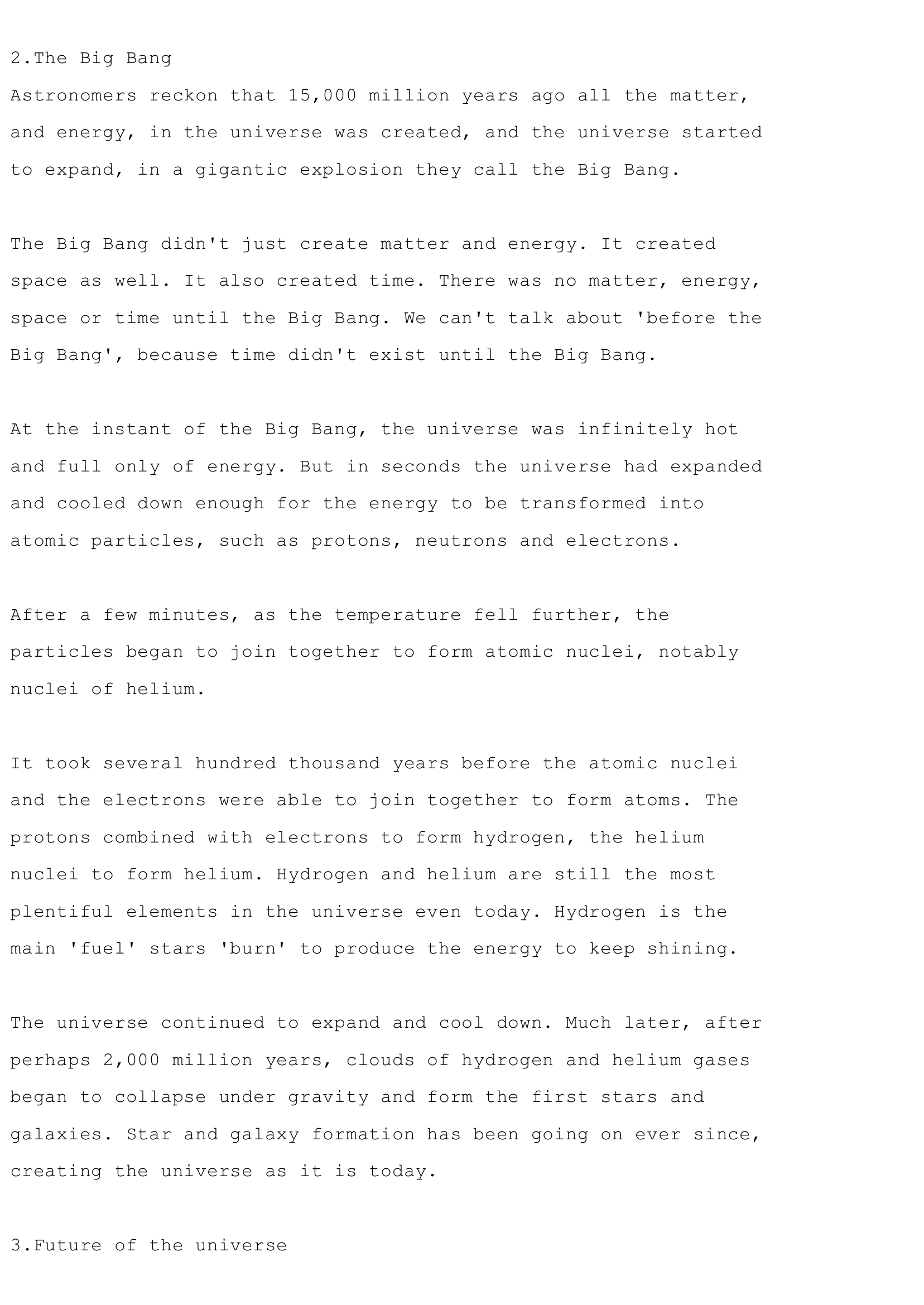SPACE: THE BEGINNING AND THE END
Publié le 17/01/2022
Extrait du document
«
2.The Big Bang
Astronomers reckon that 15,000 million years ago all the matter,
and energy, in the universe was created, and the universe started
to expand, in a gigantic explosion they call the Big Bang.
The Big Bang didn't just create matter and energy.
It created
space as well.
It also created time.
There was no matter, energy,
space or time until the Big Bang.
We can't talk about 'before the
Big Bang', because time didn't exist until the Big Bang.
At the instant of the Big Bang, the universe was infinitely hot
and full only of energy.
But in seconds the universe had expanded
and cooled down enough for the energy to be transformed into
atomic particles, such as protons, neutrons and electrons.
After a few minutes, as the temperature fell further, the
particles began to join together to form atomic nuclei, notably
nuclei of helium.
It took several hundred thousand years before the atomic nuclei
and the electrons were able to join together to form atoms.
The
protons combined with electrons to form hydrogen, the helium
nuclei to form helium.
Hydrogen and helium are still the most
plentiful elements in the universe even today.
Hydrogen is the
main 'fuel' stars 'burn' to produce the energy to keep shining.
The universe continued to expand and cool down.
Much later, after
perhaps 2,000 million years, clouds of hydrogen and helium gases
began to collapse under gravity and form the first stars and
galaxies.
Star and galaxy formation has been going on ever since,
creating the universe as it is today.
3.Future of the universe.
»
↓↓↓ APERÇU DU DOCUMENT ↓↓↓
Liens utiles
- It was with the "velvet revolution" of 1989 that Czechoslovakia put an end to the communist regime but the writer Vaclav Havel became Head of State and was then unable to withstand nationalist tensions.
- At the end of 1994, the opening of negotiations between Ireland and the United Kingdom about the autonomy of Northern Ireland marked a development in a situation deadlocked since 1920, the date of partition by the British into Catholic majority Ireland and Protestant majority Northern Ireland.
- The population, composed of Serbs, Croats and Muslims, had to face, after the end of communism, a situation of conflict.
- HAMLET by William Shakespeare Extract 3, 2.2. 364 to the end of the play: Hamlet and the players.
- Ideology and Rationality in the History of the Life Sciences

































